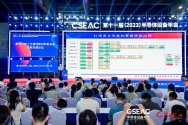Updates from CR Micro
main product is SGT MOSFET (low voltage), this imo is a low revenue business and getting commoditized
packaging utilization is 80%
mask business is improving
advanced packaging line started product in 2023Q1
so they are right now 50:50 between IDM and foundry business. Expecting this to be 60:40 next year1、目前,的IDM和晶圆代工收入占比约为1:1。我们预计今年四季度保持这个比例。我们预计明年产品收入占比有望进一步提升至60%及以上。
2、目前,的产品还是以中低压的MOSFET为主。但是,公司的更高毛利率的屏蔽栅MOSFET(SGT MOSFET)的出货比例会增加,将推动公司MOS产品收入保持两位数的增长;另一方面,受益于行业供不应求的现状,公司的IGBT收入占比也会增加,预计今年公司IGBT产品线收入有望达到10亿元的规模,约占总收入的10%。未来三年,IGBT收入有望保持50%的复合增速;而且,华润微也积极拓展SiC相关业务,并有望在今年取得2,000万元的收入。整个高压产品(如高压超结MOS)占比也会相应提升。
3、公司的晶圆代工产品和自有产品,即IDM产品,具有较大的区分度。无锡的产线主要承接了代工需求,而重庆产线,包括8寸和12寸产线也承担公司自身的IDM业务。从产品角度,PMIC产品占到晶圆代工/制造业务的60%多,是最大的产品贡献。这与IDM业务中功率器件贡献占比较大存在差异。长期来看,虽然不会增加晶圆代工产线,但是可以通过机改释放一些产能增量,公司这块晶圆制造业务也有保持小幅成长。、
4、公司今年的封测业务产能利用率在80%左右。这是受到市场需求下滑,尤其是消费类应用需求下滑的影响。市场预期行业需求疲软可能会在明年二季度开始触底改善。
5、的掩膜业务此前保持比较高速增长,今年预计销售额至少增长10%
main product is SGT MOSFET (low voltage), this imo is a low revenue business and getting commoditized
packaging utilization is 80%
mask business is improving
Mask business is now up to 3000 pieces/month. high end mask is getting built, looking to produce 1000/month. Will be supply 40nm masks in 2024掩模业务方面,华润微上半年掩模业务销售额同比实现一定幅度增长,产能目前3000片/月,掩模业务已服务国内各主要FAB线及众多IC设计公司。高端掩模项目已在建设中,规划产能1000片/月,预计在2024年可提供40nm及以上线宽的掩模代工服务。
it can package 870m chips/month. seems like a lot华润微对封测产能表示,公司目前封装能力月产能8.7亿颗,未来公司将通过重庆封测基地项目为抓手,全面覆盖功率半导体产品模块封装、晶圆中道生产线、面板级封装、第三代半导体封装等技术领先门类,有序推进封装工艺升级
its various power chips are entering PV supply chain公司MOSFET、IGBT、SBD、TMBS模块均已进入光伏应用,公司自有产品下游应用结构中新能源(含光伏)占比达到19%,产品导入光伏组件龙头客户并实现批量供货。
auto grade IGBT for SiC MOS look to be delivering this year or next. Production a Chongqing plant reaching 20k wpm (8-inch equivalent) by end of the year. i don't get why you would still measure by 8-inch equivalent when the plan itself is 12-inch1)继续优化MOS产品市场结构,光伏/储能/工控营收占比将继续提升;
2)开展IGBT模块在汽车主驱上的验证并有望于2024年出货;
3)SiC二极管有望于2023年实现产品系列化,车规级SiC MOS产品预计将于本年贡献收入。
在产能方面,华润微重庆12吋产线已经通线,预计2023年底该厂产能将爬坡至2万片/月(等效8吋);深圳12吋产线建设稳步推进,公司预计将于2024年底起逐步产生收入;先进封装产线已在1Q23实现批量生产,预计全年将稳步上量
advanced packaging line started product in 2023Q1

